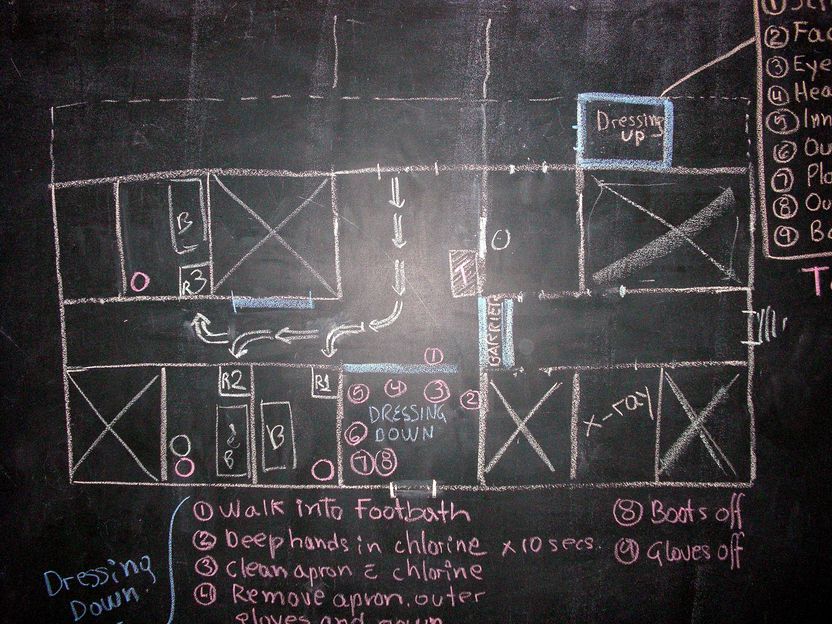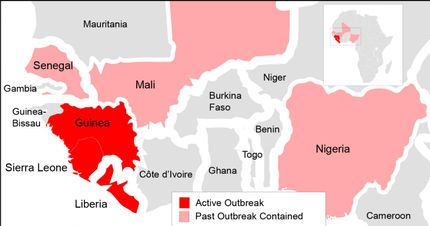Students build Ebola isolation ward in Sierra Leone
Advertisement
The trip to Africa as part of advanced training in tropical medicine had been planned long ago. When they were finally off the Ebola virus was still outside Sierra Leone. That it would spread to “their” hospital to Makeni during their four-week stay was something the three medical students of Witten/Herdecke University (Till Eckert, Simon Scheiblhuber, Nicolas Aschoff) would have never thought possible. But the virus came nearer and nearer, remembers Till Eckert: “We heard about it in staff meetings in the first three weeks. From a certain point it became clear that sooner or later the virus would reach Makeni, a major commercial centre in the country.” Faced with the choice to leave or stay, they decided to stay and provide help. Wishing to avoid the risk of direct contact with the virus they came up with a specific kind of support: they developed a concept for an isolation unit and built it themselves.

Isolation ward: floor plan
Universität Witten/Herdecke
In order to start quickly they paid for the initial material required out of their own pockets. And operations started abruptly indeed: the first patients arrived one day after the ward was completed, which left no time to school medical, nursing and cleaning staff beforehand. Nevertheless, the nine-step procedure conceived for safe undressing worked perfectly right away. The most important thing, so Eckert, is to ensure that absolutely all materials that enter the isolation ward never leave it unless for incineration under strict safety regulations.
The ward has one entrance and one exit. Entry requires full protective clothing, and chlorine is used for disinfection. Medical and nursing staff must step into buckets for decontamination; even the up to three pairs of gloves to be worn in layers must be disinfected separately and discarded. The students report that it is particularly difficult to take off glasses or boots without touching contaminated areas or using one’s hands. They came up with efficient methods to overcome all these problems.
Lacking the means for regular whole-body spray disinfection, the Witten students were forced to improvise. But their efforts were successful. Till Eckert is pleased to report that wards in line with their model were established all over the country. The original reason to go to Africa was to complete the practical part of training stipulated in the medical curriculum at Witten/Herdecke University; the students never expected these real-life conditions.
Lack of information among the general population, so Till Eckert, turned out to be the greatest problem in fighting Ebola: “The war in Sierra Leone until 2007 created a large backlog in education and knowledge. Many people do not believe in the existence of the virus because it is invisible. Bodies of deceased relatives are abstracted from hospitals for ablution, which naturally causes further infections. And people are poor so they can only afford to consult natural healers or witch doctors.” It took a long time for donations to reach the needy areas, which made the creation of effective and affordable disinfection points all the more important. Till Eckert: “We were happy to help within the limits of our resources, and we would like to encourage many others to do what they can for the affected countries.”























































